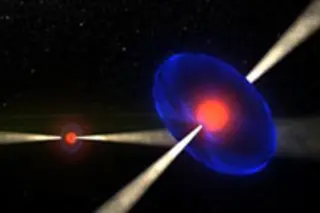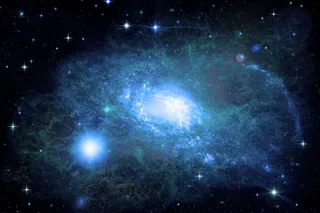A new study of a pair of neutron stars has proven that Albert Einstein got the details right on his theory of general relativity, which describes the interactions of gravity, space, and time in our universe. A team of astrophysicists examined two newly discovered neutron stars, the small and dense stellar bodies formed after a supernova collapses, and found that Einstein accurately predicted their movements more than 90 years before the unusual star system was first sighted.
In Einstein's relativistic universe, matter curves space and slows down time, and the speed of light remains the only constant. But those are the big effects. The theory of relativity also includes some more esoteric details, one of which is called spin precession. The idea goes like this: Two massive bodies orbiting near each other will warp space enough to disturb the central axis around which both are moving, causing them to begin ...














